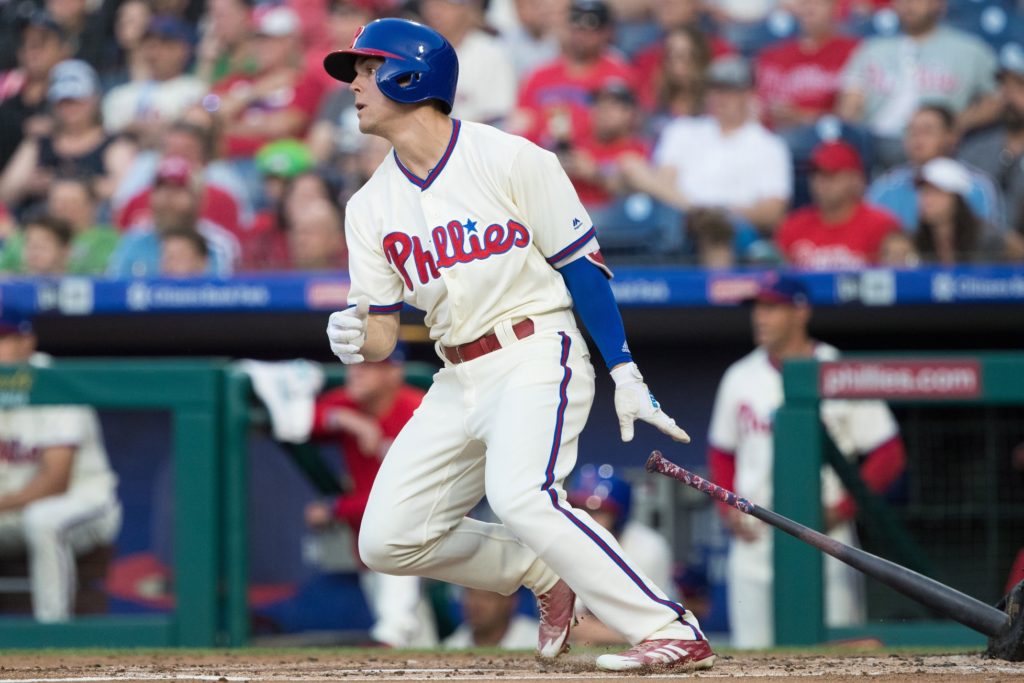Ad Disclosure
The Phillies’ Center Field Competition Is Cause For Concern
By Bob Wankel
Published:

Put the ball in play. Just put it in play.
That has to be the message to both Roman Quinn and Scott Kingery right now.
Along with Odubel Herrera, both players are in the mix to fill the Phillies’ gaping hole in center field. While Herrera has cooled after a strong start this spring, both Quinn and Kingery have failed to take advantage and create any separation in what has quickly become an uninspiring race.
A lack of consistent contact is the biggest culprit. Some quick spring numbers:
- Kingery has struck out in 9 of 20 plate appearances.
- Quinn has struck out in 8 of 19 plate appearances.
We can do the *small sample size alert* thing, and that’s fair — it is a small sample size, but an inability to make consistent contact isn’t a new problem for either player.
Nearly 31% of Kingery’s at-bats ended in a strikeout last season, while more than 36% of Quinn’s at-bats ended on strikes.
Across the game, strikeouts are up, but these aren’t 30+ home run, all-or-nothing guys we’re talking about here.
Both are athletic players who can use their speed and agility to put pressure on opposing defenses. They are both players, who when they are at their best, can shoot gaps, take extra bases, and be “in the middle of everything” guys.
Those things, and the pressure created by those things, don’t happen when the ball isn’t consistently put in play.
Manager Joe Girardi believes both Kingery and Quinn need to better understand who they are as players.
“I think they’re trying to do too much is what it comes down to,” he said after the Phillies’ 9-3 win on Saturday afternoon.
“You need to understand who you are and what your game is, and you have to play to that. These guys probably have pressure on them right from the beginning. For a lot of these guys, the pressure starts when the season starts. These guys have pressure because they’re trying to make a team and earn a spot. I understand that, but you have to be able to relax and know who you are to perform.”
I asked Girardi why both Quinn and Kingery have seemingly had such a difficult time recognizing who they are as players.
“They want to contribute more,” he said. “They want to be a big part of the team, and, sometimes, players don’t understand that when you do the little things, that’s a huge part of the team.”
Girardi went on to provide an insightful personal anecdote:
Joe Girardi thinks Scott Kingery and Roman Quinn are trying to do too much and need to better understand who they are as players. I followed up with a question about what goes into that.
Girardi provided a story from his own personal experience. pic.twitter.com/6OitsXFpA1
— Bob Wankel (@Bob_Wankel) March 13, 2021
The offensive struggles of both players have left the door open for Herrera, who came to Clearwater last month needing to overcome both significant rust and a concerning past to win an unlikely roster spot.
Herrera is just 4-for-17 this spring. He remains far from a lock to make the roster, but he may possess the most upside for a team needing every advantage it can find as it tries to narrow the talent gap with its division rivals.
Of course, all of this ignores the impressive spring of former No. 1 overall pick Mickey Moniak, who is hitting .417 with a pair of homers in 12 Grapefruit League at-bats.
Fan support for Moniak has unsurprisingly grown, but my sense is the Phillies remain reluctant to go this route.
In recent days, Girardi has referred to Moniak as “interesting,” but quickly noted that the 22-year-old needs to get consistent at-bats when up with the team.
Just two weeks ago, Moniak wasn’t even on the radar for a roster spot. His late entrance into the center field conversation is a testament to his solid play.
Several of his 12 plate appearances have been been impressive, but his surprising emergence is also a testament to the struggles of the primary competitors for the job.
Are these latest developments enough to justify potentially messing with Moniak’s encouraging progress?
This is a question that needs to be answered over the next two weeks — a question the Phillies probably would not have to contemplate if Quinn or Kingery would start putting the ball in play.
Bob Wankel covers the Phillies for Crossing Broad. He is also the Vice President of Sports Betting Content at SportRadar. On Twitter: @Bob_Wankel E-mail: b.wankel@sportradar.com